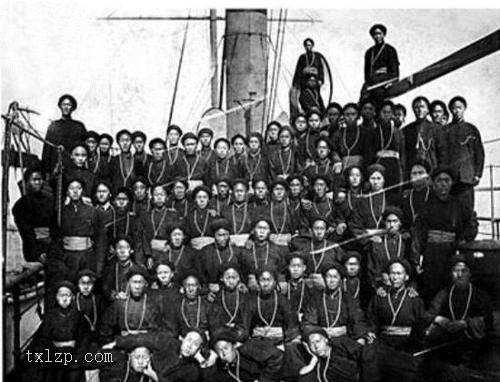[Statue of Vajrayana Bodhisattva]
Statue of Vajrayana Bodhisattva, 9th century, gold-plated red copper, 28cm high. The old collection of the Qing Palace
Vajrayana Bodhisattva, also known as Vajrayana, has great momentum. This image is gold-plated in red copper, standing, wearing a flower-shaped trefoil crown on the head, with a flame pattern oval light on the back, the right hand drooping, bending the index finger to form a seal, the left hand holding a diamond pestle, the foot is a double-layer lotus base, the upper lotus petal is gathered, the upper lotus petal is folded, and the lower lotus petal is spread flat. It looks like the upper body is naked, only the neck is decorated with a simple necklace, the lower body is wearing a short skirt, and the silk ribbon is draped obliquely. The end of the ribbon is lifted like a ribbon in the wind, echoing the posture of the three folded limbs, which is motionless and lifelike. A thin line is cast on the left side of the body to connect the upper and lower parts. It is commonly known as Zen meditation line, which is the expression of the divinity of the statue in the early Tantric modeling vocabulary
Vajrayana Bodhisattva, with Vajrayana pestle as its image feature, is one of the eight Bodhisattvas who often follow the Buddha. Together with Avalokitesvara Bodhisattva and Manjusri Shili Bodhisattva, it is called the “three family surnames” of Esoteric Buddhism, which respectively represents the righteousness of “evil, mercy and wisdom”. As a vajrayana expressing the evil, its shape has two forms: silence and anger. This statue is a silent one. The statue of the hand of Vajra with this posture is common in the early statues of Nepal, while the shape of anger became more popular in the 13th century.
![图片[1]-vajrapani bodhisattva-China Archive](https://chinaarchive.net/Five Dynasties and Ten Kingdoms/Court religion/1394.jpg)


![[Qing Dynasty] British female painter—Elizabeth Keith, using woodblock prints to record China from the late Qing Dynasty to the early Republic of China—1915-China Archive](https://chinaarchive.net/wp-content/uploads/2022/11/image-191x300.png)


